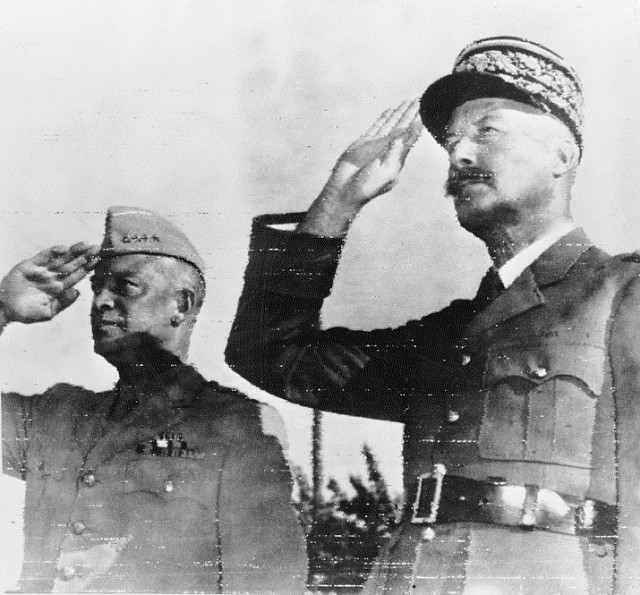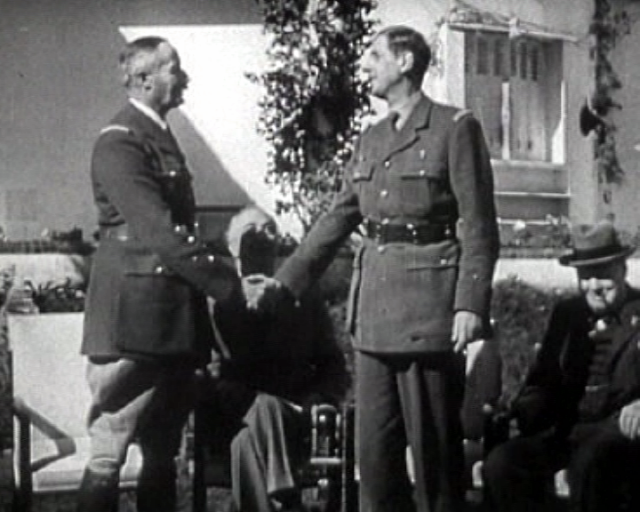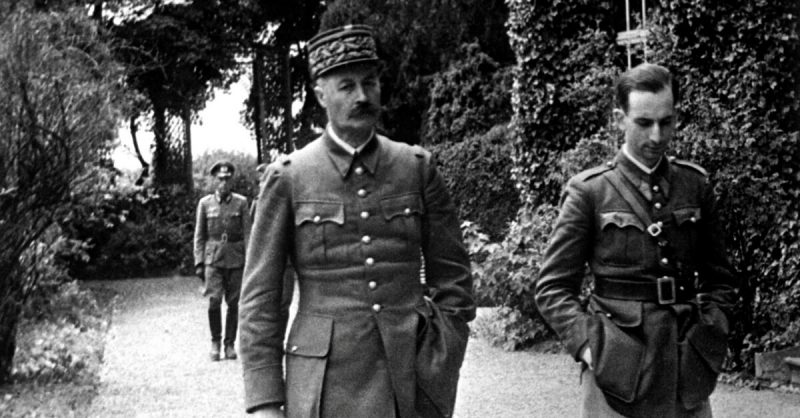In August 1914, what many feared, and indeed, some had secretly hoped for, was finally taking place. The major European military powers were at war. At a time when nationalist and imperialist sentiment was rampant, there could be no better way than war to prove who the dominant power was.
By the end of August 1914, Germany had the French on the run. They had smashed their way west through Belgium and northern France, despite surprisingly strong resistance from the Belgians and an expeditionary force from Britain. After breaking through Mons and Charleroi, the vaunted German army’s so-called strong right wing began to wheel its massive wall of humanity to the south towards its ultimate goal, Paris.
Withdrawing to St. Quentin, the French were in desperate need of a counterattack to halt the German advance. The task fell to the Fifth Army under Charles Lanrezac. It would not be easy, especially given that the Fifth was separated from friendly armies by several miles, but there could be no delay. The Fifth was to counterattack against Karl von Bulow’s German 2nd Army in full force.
Among the Fifth Army’s ranks was the 4th Zouaves Regiment, in which a captain named Henri Giraud served. Giraud hailed from humble Alsatian roots, and was an exceptional student as a boy. An adventurous person by nature, Giraud attended the Saint-Cyr military academy and graduated in 1900. He was assigned to the 4th Zouaves in North Africa, until the unit was transferred to France in 1914 upon the outbreak of war.
On 30 August 1914, the French Fifth Army began its counterattack against von Bulow’s 2nd Army. Captain Giraud led his 4th Zouaves in a bayonet charge. In these first stages of the war, the French were learning the hard way that a gallant, spirited charge, while noble, was practically suicide against a modernized foe that had produced technology specifically designed to combat such tactics.
The Germans’ machine guns wreaked havoc on any bayonet charge, and Giraud’s charge was no exception. Although the Fifth Army’s counterattack was successful in halting the German advance, it came at a great loss with 10,000 French killed and 2,000 captured. Among the captured was a severely wounded Henri Giraud.

Giraud was sent to a prison camp in Belgium. Given his injuries, life in the camp was no doubt harsh for the captain. But the strong-willed Giraud was given an opportunity he couldn’t pass up: the opportunity to escape. Edith Cavell, a British nurse, had begun to set up an escape network for wounded French and British prisoners. The network allowed the prisoners to reach the neutral Netherlands.
With Cavell’s help, Giraud was set to be funneled out of Belgium to freedom. Two months after his capture, Giraud broke out of the POW enclosure and worked his way towards the Netherlands by assuming an array of disguises; when the need arose, he would become a traveling circus roustabout, a stable boy, a coal salesman, whatever the situation demanded. Soon, he reached the Netherlands, and was evacuated to the United Kingdom.
He soon rejoined the 4th Zouaves in France. As for Edith Cavell, her network would soon lead to her death, as she was arrested in August 1915 after the Germans discovered that she had helped about 200 Allied soldiers escape. She was executed in October 1915 for treason.
Such stories of daring escapes never fail to capture the imagination. But Giraud had not made his last escape! The date was 10 May 1940. The now-General Giraud, the commander of France’s Ninth Army, was defending his homeland from same enemy he had fought in 1914, only under new leaders and in a new war. For the second time in 25 years, Germany was invading France.
The Ninth had taken up defensive positions in Le Catelet, France, when German infantry from the 6th Panzer Division poured out of the Ardennes Forest near the city. The brave General Giraud went straight to the front lines to get a handle on the situation. He made his way to a machine-gun emplacement, which, to his misfortune, became surrounded by the Germans. Soon, the unyielding emplacement was barraged heavily by German artillery, and the Germans asked the survivors to surrender. Among the survivors was none other than General Giraud.

General Giraud’s escape in World War I had not been forgotten by the Germans. Due to his high rank, he was to be treated with respect, but nevertheless, they made it a priority to put him in a high-security, “escape-proof” location. He was taken to Koeningstein Castle, near the Czech border. It seemed the ideal location to prevent an escape; it stood beside a 150-foot-high cliff, and every exit was guarded with double intensity. Regular inspections of the inside were made, and if someone was missing, the Gestapo would be on the case instantly.
Naturally, General Giraud started to scheme for his escape upon arrival. At age 61, he was not a young man anymore, and the injuries he sustained in the First World War had left him with a permanent limp. Regardless, Giraud refused to give the Germans his word that he would not try to escape. He learned to speak German fluently, memorized to the square yard a map of the surrounding area, and even managed to set up communication with friendlies back in France, from which he acquired copper materials for a rope.
On the morning of April 17, 1942, after two years at Koeningstein Castle, Giraud was ready. Looking down the 150-foot cliff, Giraud waited for the guard to leave the area, and then successfully descended the cliff. Finding cover, he covered his conspicuous general’s uniform with a raincoat, put on a Tyrolean hat, and shaved off his trademark mustache. A prearranged escort met him, and helped him reach a nearby train station.
The German military was on high alert for a tall Frenchman with a distinctive limp trying to leave the country. Giraud’s plan was to ride continuously train after train within Germany until his escape became old news. He possessed fake identification, but the photograph was of another person who happened to look like Giraud, so he took care to avoid showing it to the Gestapo. On one train, Giraud happened to be sitting across from a young German lieutenant who had served in the Afrika Korps; he struck up an amiable conversation. A Gestapo man came around and asked for Giraud’s ID, as well as the lieutenant’s.
The lieutenant, incensed, shouted, “How dare you interrupt us!” and ordered the man to go away. At one particular train station, the Gestapo security was unusually tight, and was thoroughly searching every single passenger. It was a risk he could not take. So, Giraud waited until the train began to pull out of the station.
Briefcase in hand, holding his hat on his head, Giraud started off running towards the train- without limping. The pain was excruciating, but he was not about to give himself away. A Gestapo soldier, fooled completely into thinking Giraud was simply an agitated businessman in a hurry, helped him aboard.
Giraud had wanted to return to France, but when he finally got there after numerous train rides, he discovered that anyone six feet or taller was being searched by guards. So, he boarded yet another train and headed back into Germany, his destination Switzerland. The security there was also tight, so upon arrival, he struck off on a neglected trail through the woods.
Suddenly, he found himself surrounded by bayonets. Fearing the worst, he turned to face his captors, but was relieved when they spoke with a Swiss dialect- they were friendlies. The Germans were furious to hear that the Swiss had taken him in, but their demands that he be turned over were refused.
Finally, Giraud made his Hail Mary pass back to France, this time by road. He threw off the Germans by changing cars several times while driving through Switzerland. The trick worked, and Giraud had successfully pulled off a second escape from the Germans.
Henri Giraud’s escape inspired a France that was going through one the darkest times in its history. Such was the effect that the Germans attempted to assassinate Giraud, forcing him into hiding. But never again would they find the man that they simply could not contain.
When Giraud made it back to France, he sent his wife a telegram that read: “Business concluded excellent health affectionately Henri.” It was an exact replicate, word for word, of the telegram he had sent his wife after his escape in 1914.
- By John South for War History Online
